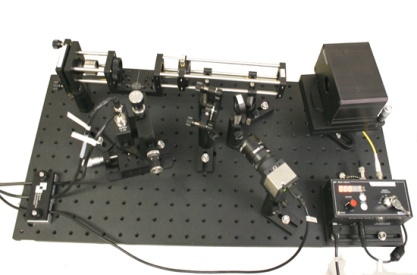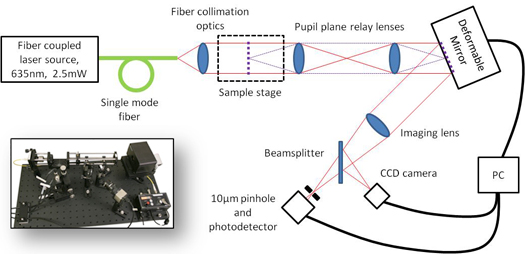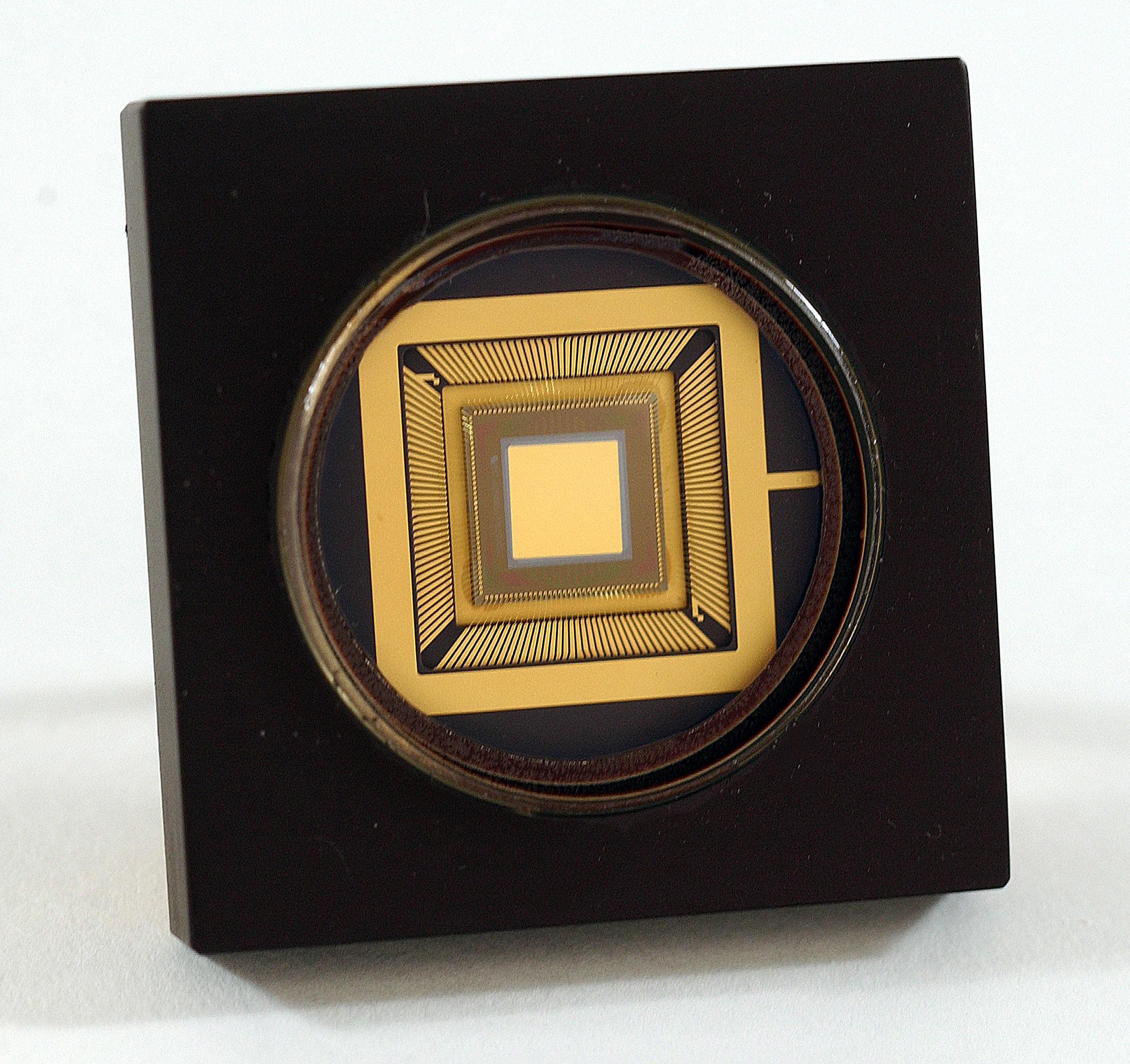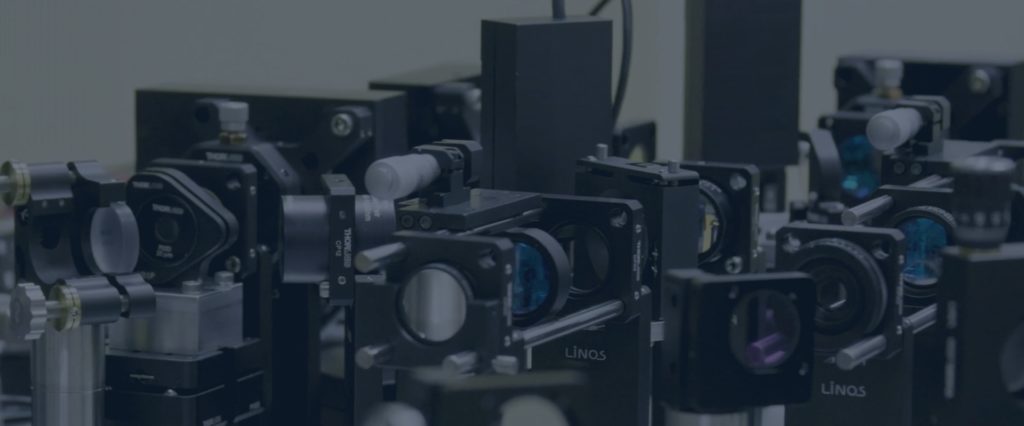
Up until recently nearly all adaptive optics (AO) systems used wavefront sensors for correction. But with recent advances, off-the-shelf wavefront sensorless AO is becoming a reality. Benefits of this type of AO include enhanced aberration correction due to the elimination of non-common path errors and wavefront sensor noise.
BMC has developed a Wavefront Sensorless AO Demonstrator (WS-AOD) which provides a platform for utilizing metric-based wavefront control with BMC MEMS deformable mirror (DM) technology. While conventional AO systems perform closed-loop DM control using direct measurements of the wavefront as feedback, the metric-based approach uses details in the aberrated light to improve clarity. Two versions are available; one is optimized for beam shaping applications and the other is designed for imaging applications.
We see laser beam shaping as a key area in this exciting technology and our demonstrator is built to address the unique challenges of this field. Our WS-AOD serves as an introduction to wavefront sensorless adaptive optics principles. It allows users to understand the details involved in properly implementing a metric-based adaptive optics solution on an optical system. The demonstrator can also be used as a stand-alone aberration compensator. By introducing aberrations in the sample stage, the system can be optimized for a multitude of use cases from laser research applications to scanning laser microscopy. Additionally, the user can easily integrate the hardware into an existing optical system and utilize the open source software code for metric-based correction.

Schematic of WS–AOD for beam shaping applications. Also available for imaging applications.

To compensate for phase aberrations the WS–AOD uses BMC’s deformable mirror (DM) technology. BMC’s DM is a continuous facesheet deformable mirror that is controlled by hysteresis-free electrostatic actuators located on a square grid. The full DM active aperture can be as little as 1.5 mm to as much as 25 mm across. Each actuator can provide up to 5.5 µm of mechanical stroke, which corresponds to about 11 µm of phase control. The electrostatic actuator array is driven using independent high voltage channels with 14-bit resolution. This corresponds to sub-nanometer displacement precision. The drive electronics can provide frame rates of from about 4.6 kHz up to 100 kHz.
The control software for WS-AOD allows the user to correct for aberrations introduced as well as generate a random aberration using the DM. The software is open source code based in Mathwork’s Matlab and runs on platforms using Windows operating systems. By utilizing the included algorithm to manipulate the mirror surface, the mirror compensates for aberrations and converges to an optimal profile. The user has access to the open source code to balance correction capability between maximum signal and minimal time.
To learn more please click here for a copy of our Wavefront Sensorless Adaptive Optics white paper.
Check more
Related Articles

Defense TechConnect Conference and Expo: Fun in the Sun with the MRR
Last week I was fortunate enough to be able to parade BMC’s Modulating RetroReflector (MRR) in front of multiple audiences affiliated with the Defense community at the Defense TechConnect (DTC) Conference and Expo in Tampa, Florida.
# Applied Adaptive Optics 11.01.2018
Read more
MiFoBio 2018: AO Microscopy in Action
Recently, Boston Micromachines sponsored MiFoBio (Functional Microscopy in Biology), an event that brought together the microscopy community, academics and professionals alike, to attend courses and workshops that explored the understanding and current trends of biological imaging.
# Applied Adaptive Optics 10.16.2018
Read more
